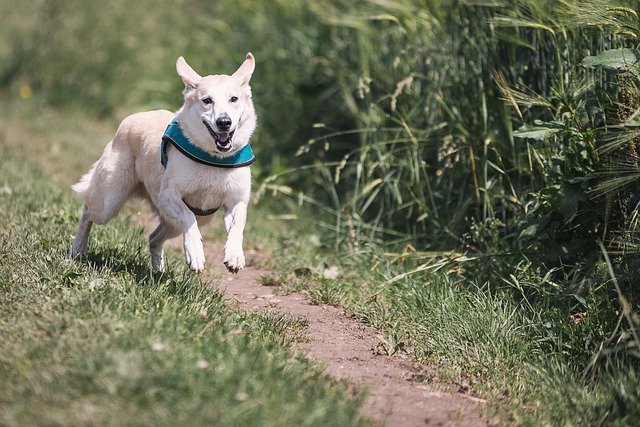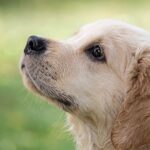I’ve had some of these breeds during my lifetime, exposure to many others, but it wasn’t until my wife brought home a rough collie puppy that I experienced a ‘lassie’ dog. Now we have 3 of them and I wish I had know this breed decades ago. Loving, gentle, playful (they love to fetch) and loyal. Never, ever have they done typical dog things like steal food from the table, the garbage, and they accept snacks politely. They will almost explode before they dirty the carped if you fail to let them out to go, and then feel guilty about it. They do like to bark (they are protective) but listen when told to shut up. They are extremely intelligent and learn fast what is expected of them. They shed twice a year on average and you could make a pillow out of the soft inner fur. I’m sad their popularity faded out over these past decades and thrilled that I had a chance to own a few. They make horrible guard dogs, it’s just not in their nature to bite people but their size is deterrent enough.
German Shepherd
As herding dogs in the past, German Shepherds would guide, herd, and protect livestock. Because of this, German Shepherds may sometimes act a bit distant or aloof. They will love you and your family, but they may give all new people the stink eye. German Shepherds respond extremely well to training.
These dogs need daily exercise.
German Shepherds shed heavily and frequently.
The Golden Retriever
Golden Retrievers are one of the most popular dog breeds and there are many good reasons for that. These dogs are loyal, active, family dogs.
Unfortunately though, if you are looking for a dog that will protect your family in the event of a break-in, a Golden is not a good choice.
When it comes to energy levels though, Golden retrievers do need a decent amount of exercise.
Be prepared to groom your Golden often—these pups shed frequently, and heavily.
The Labrador
Labs are wonderful pets for families and children, and they play nicely with other dogs. Labs are so obedient and kind that they often serve as therapy dogs for the sick and the blind.
Remember though that Labs are a large breed and therefore, require plenty of regular, vigorous exercise, in order to stay healthy and fit.
Just like golden retrievers, labs are notorious shedders and have a double coat which needs routine maintenance and grooming.
The Beagle
Beagles are known for their excellent nose and their love to hunt.
One of the advantages to owning a beagle is that they are a smaller dog with a shorter coat. If you are living in an apartment situation where you have a size limit, a beagle will likely fit.
And remember, Beagles are very stubborn and can be difficult to train. Their bark may be quite sharp. Beagles have a much shorter coat which means less shedding.
The Poodle
Poodles, whether standard, miniature, or toy in size, are easily recognized by their distinctive, curly fur. Poodles of all sizes need to be brushed daily, and keeping the coat neat and attractive involves frequent trips to the groomer. If not cared for properly, a Poodle’s fur can become matted and poorly conditioned.
This dog is excellent with children, does everything possible to please its owner, is loving and affectionate, and gets along incredibly well with other animals if introduced while young. Even better, due to their single fur, Poodles shed very little and are, therefore, a good choice for owners who suffer from pet allergies.
The English Bulldog
One of the advantages to owning an English Bulldog is the calm and lazy temperament of the dog. Low exercise requirements allow Bulldogs to be comfortable living in an apartment.
Bulldogs are expensive to purchase and prone to numerous health issues.
Bulldogs shed a moderate amount of hair. They drool often, and tend to be gassy because of their body composition.
These dogs seldom bark, but that doesn’t mean they aren’t noisy. Bulldogs make a symphony of snorts and snores.
The French Bulldog
French bulldogs make excellent pets for city-dwellers, since they rarely bark, are small in size, and require minimal exercise. Frenchies’ flat face makes them unable to cool down in hot weather and they need to be protected from heatstroke.
While English bulldogs require 2-3 a week brushing, Frenchies don’t shed much and one brushing per week is enough to keep their coat healthy and free of dead hair.
The Rottweiler
Rottweiler may become very territorial of your home and family, and will instinctively find it challenging to accept the presence of strangers or visitors. This requires significant amounts of training and socialization to resolve.
These pups’ double-coat sheds moderately, and Rottweilers are one of the most expensive dog breeds.
The Siberian Husky
Huskies originated in Northeast Asia where they are bred by the Chukchi people for sled-pulling, guarding, and companionship. As born pack dogs, Siberians enjoy family life and get on well with other dogs;
The breed’s stamina, extreme intelligence and independent nature makes them very stubborn.
Pembroke Welsh Corgis
Corgis may not be a good fit for bicyclists though because Corgis’ stumpy legs are too short to keep up with the fast pace of a bicycle.
Corgis are often willing and eager to please, but they have a stubborn streak to them that can sometimes become problematic. These herding dogs require a lot of exercise.
Mutts
These dogs tend to be less expensive and may be less prone to hereditary health conditions. This is because over generations, breeders have perpetuated and magnified genetic flaws in many of the popular purebreds. Pugs, for example, are prone to respiratory problems because of their short nose.



